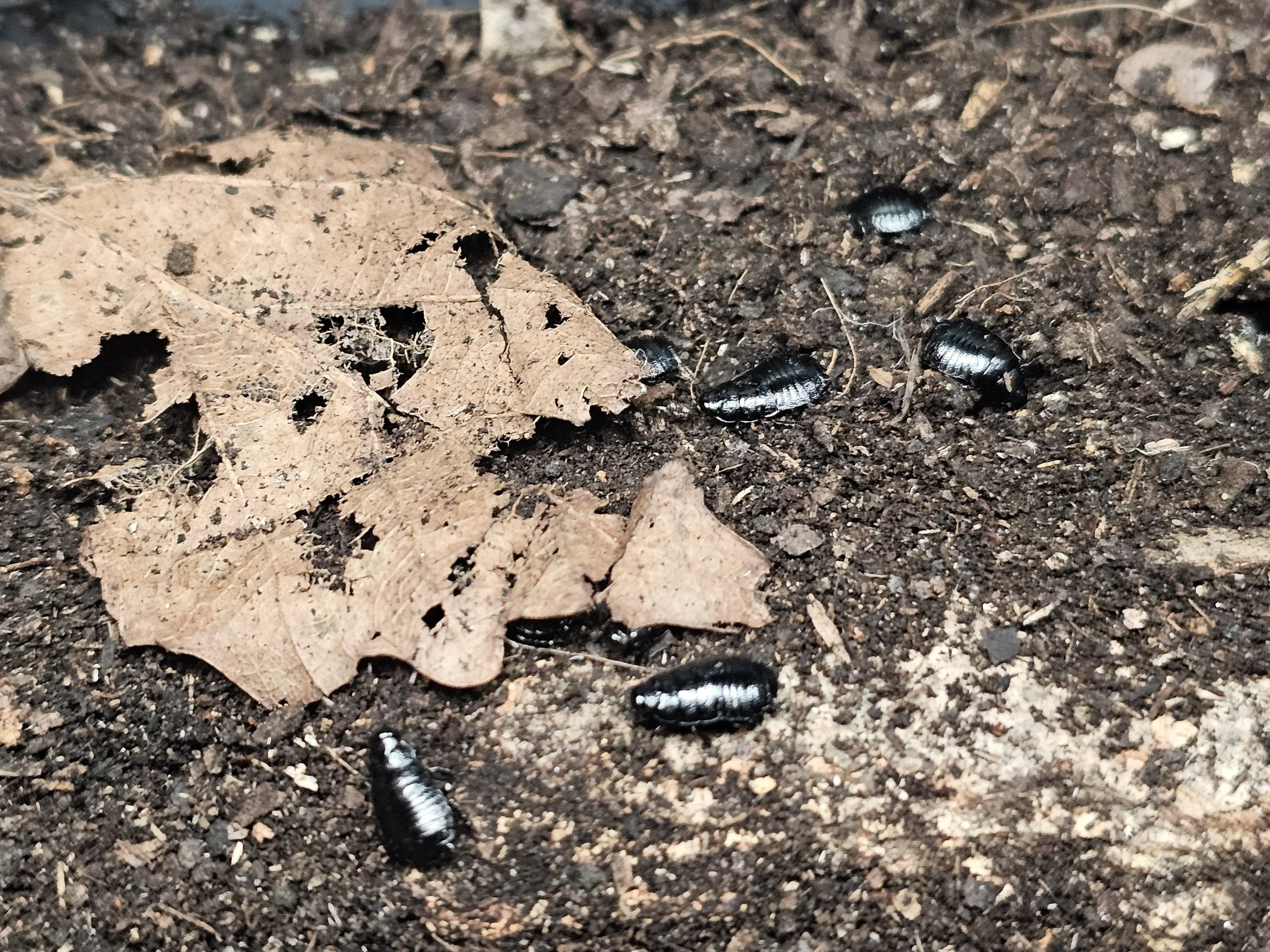Panesthia flavipennis
Panesthia flavipennis adult male
Exactly 1 year ago, I received a group of what I believe to be Panesthia cf. flavipennis. Around 20 mixed sized nymphs and 1 adult male.
A group of Panesthia flavipennis
Panesthia flavipennis Wood-Mason, 1876 asserted distribution is limited to India. One of the issues is that these roaches came from individuals originally caught in Yingjiang County, Dehong Prefecture, Yunnan Province, China, so I am not exactly sure if there are subspecies or a totally different species from P.flavipennis type species.
Checking the specimen records from Cockroach Species File, you may notice small and few external morphology differences between both specimens. But when doing a search on iNaturalist, it seems that particular specimen, even though found in India, has closer resemblances with mine than the one from CSF.
I will place all three photos for you to compare.
I took some photos of the nymphs and the adult male.
I had to wait for a long time before I got any females! It was a true test to patience!! Almost 8 months and 5 adult males later…. I finally got a female. Unfortunately I didn’t do any macro photographs yet. But here she is!!
Panesthia flavipennis adult female
Comparatively to the males, females tend to be stubbier (if not pregnant), broader, with shorter wings, small black botch, and with a smoother pronotum.
Panesthia flavipennis adult female (pregnant) - thus more elongated
In terms of keeping and enclosure… I have to say it couldn’t be easier.
Panesthia flavipennis enclosure
Low ventilation enclosure sized 30x18x12cm, filled with substrate mix of cocofiber and peat. Topping it with one dry white wood log, and some dried oak leaves.
These logs are most probably the left overs of the stumps used for growing mushrooms. Making them ideal homes for wood eating/burrowing cockroaches.
They really enjoy congregating under the log, under bark slabs, inside their chewed up holes. I would risk to say that compared to other Panesthia species, these are more visible outside than other species. Making them absolute treat for the keeper!
I would do regular monthly checkups and counting on the colony, and it seemed like this day would never come…
having the first 3 mature females …
then noticing they were starting to show signs of pregnancy…
then getting really elongated and plump…
and finally 361 days after receiving them…. i found 1 baby nmyph.
Paneshia flavipennis newborn nymph
The tinniest little speck! Absolutely adorable and so exciting! So decided to do a very careful and slow removal of all the adults and large nymphs remaining to see if I could know how many babies I had.
Paneshia flavipennis newborn nymphs
I counted a total of 18 nymphs! I think this was only from one female! As I still have two looking very plump!
Paneshia flavipennis newborn nymphs
I am thinking that given the size at which I got them, plus all the waiting maturing, mating, breeding time, this species should take at least 1 year and half to cycle. At constant 25C, which is how I am keeping them.
Paneshia flavipennis newborn nymphs
Some of the nymphs can be found foraging outside, but most like to stay inside the small pockets created by larger roaches.
Panesthia flavipennis adult male and newborn nymphs
But don’t be mistaken by the photo, in thinking that the adult is protecting the nymphs. Altricial development of nymphs in Panesthia is not known to occur.
First instars of the gregarious genus Panesthia hatch independent, sturdy, pigmented, and with large well developed eyes.
On the basis of these traits, it is suggested that Panesthia as precocial, meaning capable of a high degree of independent activity from birth.
Paneshia flavipennis nymph
Paneshia flavipennis adult male
Well, this is all for this post!
Hope you have enjoyed!
Thanks for reading, see on the next one!
Cheers!



















